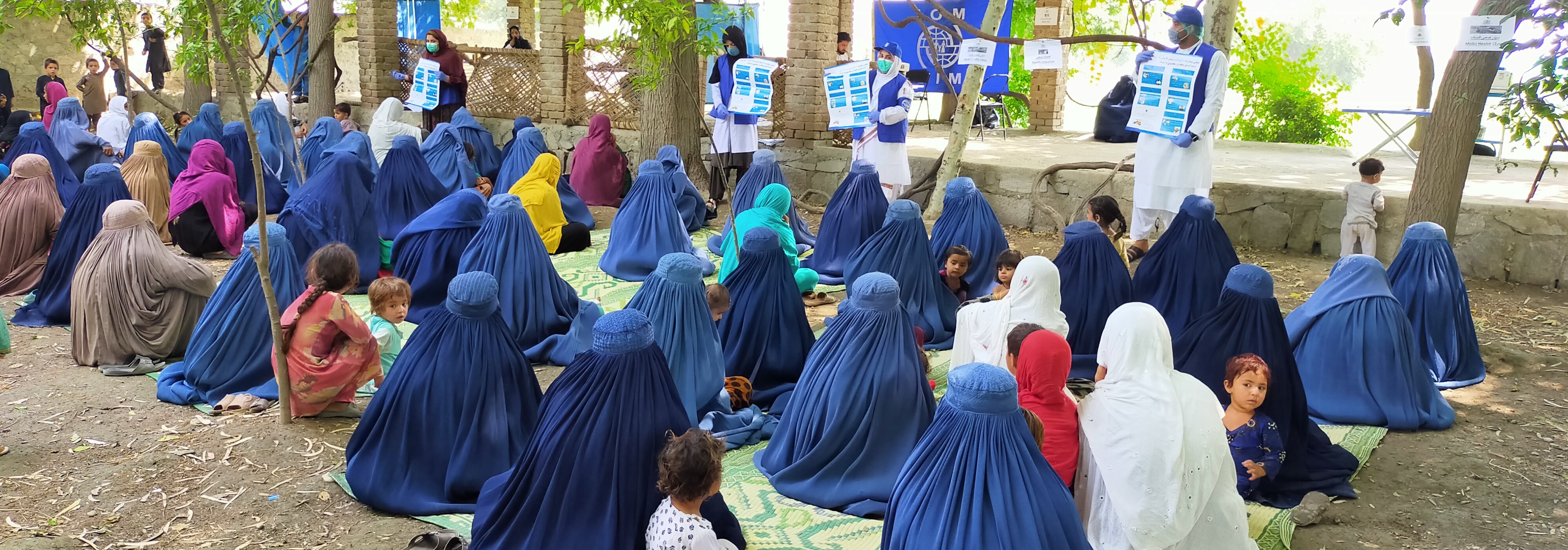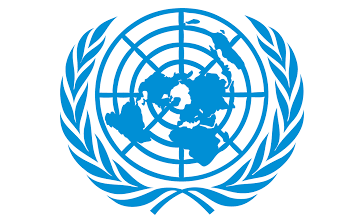IOM Vision
IOM Afghanistan assists people in need across the country with timely and effective life-saving humanitarian support, and with stabilization, including people affected by conflict and natural disaster, vulnerable returnees and migrants, and impacted host communities. IOM works to stabilize communities and build the resilience of people to mitigate risks, to recover from crises, and to reintegrate people returning home in a sustainable and holistic manner. IOM works across the humanitarian-development nexus, promoting inclusion, equality, human rights and access to services for women, men, boys and girls, in line with humanitarian principles.
Objective
Saving lives and protecting people on the move
- Vulnerable undocumented returnees;
- Vulnerable and underserved communities of return;
- People displaced or affected by conflict and/or disasters.
IOM will sustain and strengthen the delivery of essential health care to serve both IDPs and vulnerable returnees, as well as vulnerable members of the surrounding communities. Currently, IOM has 3 Primary Health Care Centres and serves 71 outreach locations with mobile teams. Services include reproductive health care (pregnancy and delivery support, post-natal care and family planning) and mental health and psychosocial support (on-site counsellors). Ongoing COVID-19 response will include:
- Risk communication and community engagement;
- Screening at the borders;
- Distributing PPEs;
- COVID-19 Rapid Response Team;
- Support to vaccination efforts; and
- Support to health facilities in view of the pull-out of the World Bank, and to be determined in coordination with the Health Cluster.
In order to address the shelter, settlements and non-food items needs of the affected population, IOM will:
- Continue to co-lead the Emergency Shelter and Non-Food Items (ES-NFI) Cluster, which also covers CCCM. In 2021, ES-NFI Cluster and CCCM coordination has been strengthened with an expanded coordination team based in the regions;
- Preposition, rapidly assess needs and respond with ES-NFI wherever there is a need across all 34 provinces, primarily for natural disasters but also for conflict-induced internal displacement. IOM’s warehousing capacity will be maintained and strengthened where needed.
- Provide a winterization response. Specific emphasis is needed on expanding site management (CCCM) coordination and operations capacity in the new displacement context, given the expansion of displacement sites and anticipated continuation of population movements.
In order to address the protection needs of the affected population, IOM will:
- Expand the current protection case management and protection monitoring programme to support IDPs as well as returnees.
- Identify persons with specific needs (including women /children at risk, serious medical cases, persons with disabilities) through protection screeners at Herat and Nimroz border points, and provide post-arrival assistance including information, referrals, and family tracing and reunification.
- Provide protection case management in 11 provinces for both undocumented returnees and IDPs households with persons with specific needs. Regular protection monitoring (surveys, interviews and community discussions) will be undertaken in coordination with the Afghanistan Protection Cluster to understand the protection environment.
IOM manages eight reception and transit centres at four major land border crossing points (Nangahar, Kandahar, Herat, Nimroz). These facilities provide strategic points for responding to people in need in communities and settlements that may form around border areas, where further movements of people are anticipated as the situation evolves, and for critical interventions such as disease surveillance at the borders and humanitarian border management. Through these facilities IOM will continue to:
- Provide assistance for vulnerable undocumented returnees including meals, overnight accommodation for up to 72 hours, needed non-food items, multi-purpose cash grants averaging USD39 per person for transportation.
Access to water is extremely limited in many parts of Afghanistan due to the current drought that is heavily affecting over three million people in the country. With the expected additional caseload due to the displacement and potential conflict damage to water supplies, IOM will:
- Focus on the procurement of WASH NFIs, as well technical equipment needed for WASH activities in displacement sites (e.g. hygiene awareness, community engagement, COVID-19 precautionary measures, latrines, hand washing stations, storage water tanks for trucking, emergency tap stands, handpump tools, water testing kits, water treatment chemicals and tools and slabs for emergency latrine construction, according to needs).

Objective
Driving solutions to displacement
- Vulnerable undocumented returnees;
- Vulnerable communities of return.
In order to work towards durable solutions, IOM will:
- Support vulnerable IDPs and returnees with assistance in sustaining themselves and their families through emergency asset building and income generation activities at their displacement sites and in return communities. IOM will contribute to economic self-sufficiency and community stabilization consistent with IOM's Progressive Resolution of Displacement Situations. Leveraging local partnerships, IOM will deliver community-based development that fosters economic, social and psychosocial reintegration, securing a higher standard of living for communities. Support to economic revitalization includes enterprise and skills development, in which value chains are created with community development projects that also improve access to basic services.
Objective
Strengthen preparedness and reduce disaster risk
- Communities living in areas vulnerable to disasters
- Authorities responsible for International Health Regulations (Points of Entry)
Aligning with the Sendai Framework, IOM will work towards preventing the worst impacts on vulnerable populations living in disaster-prone areas through the:
- Construction of small-scale disaster risk management (DRM) infrastructure (such as gabion walls) and irrigation systems, and through Community-Based Disaster Risk Management (CBDRM). With women, men, boys and girls involved, communities will build and be equipped for Community Disaster Management Action Plans, community hazard maps and early warning systems.
At Points of Entry (POEs) that the Organization has access to IOM will:
- Sustain and strengthen support at the POEs, working with relevant authorities and the Ministry of Public Health.
- Continue providing health support, including active tuberculosis (TB) case finding at major border crossing points and COVID-19 cross-border coordination, including disease surveillance, PPE procurement, risk communication and Rapid Response Teams to manage sample collections at POEs.
- Work with WHO to implement International Health Regulations as possible and feasible.
Objective
Contribute to an evidence-based and efficient crisis response system
Humanitarian and development partners, with a view to the delivery of better-targeted evidence-based mobility sensitive and sustainable humanitarian and stabilization programming for people in need across the country.
IOM’s Displacement Tracking Matrix (DTM) will provide accurate and timely data to IOM and the humanitarian and development community in Afghanistan. This will include:
- Emergency event tracking for real-time information on population movements;
- Flow monitoring at border crossing points;
- Community-based needs assessments and baseline mobility assessments.
DTM tools quantify population sizes, locations, needs, and mobility patterns, as well as the profiles and intentions of migrant, mobile, cross-border and nomadic populations; provide evidence-based metrics on outflows and inflows; and identify at-risk, vulnerable migrants in need of protection services.
Afghanistan
The map used here is for illustration purposes only. Names and boundaries do not imply official endorsement or acceptance by IOM.
Figures are as of 31 December 2023. For more details of IOM's operational capacity in country, please see the IOM Capacity section.



















